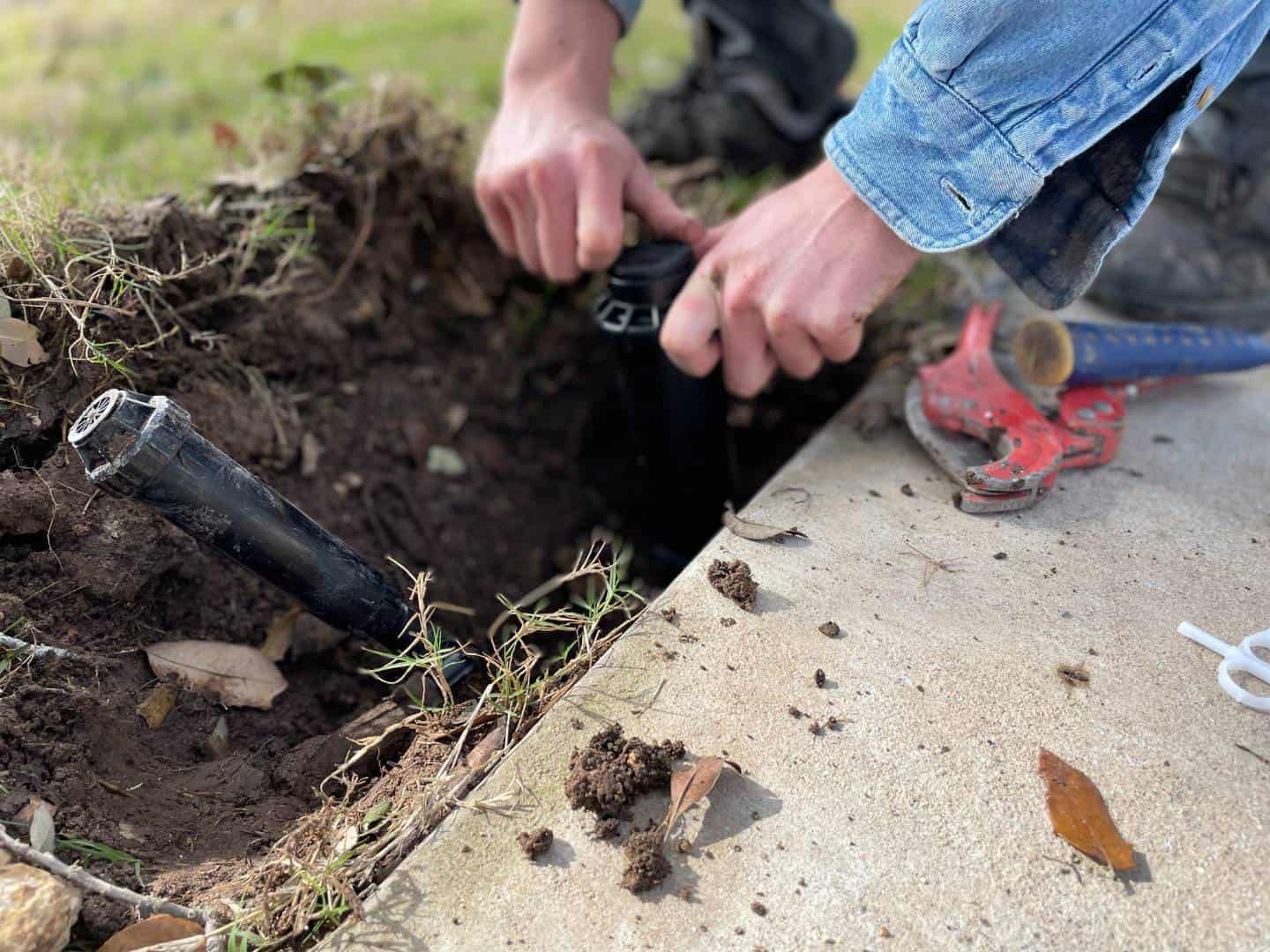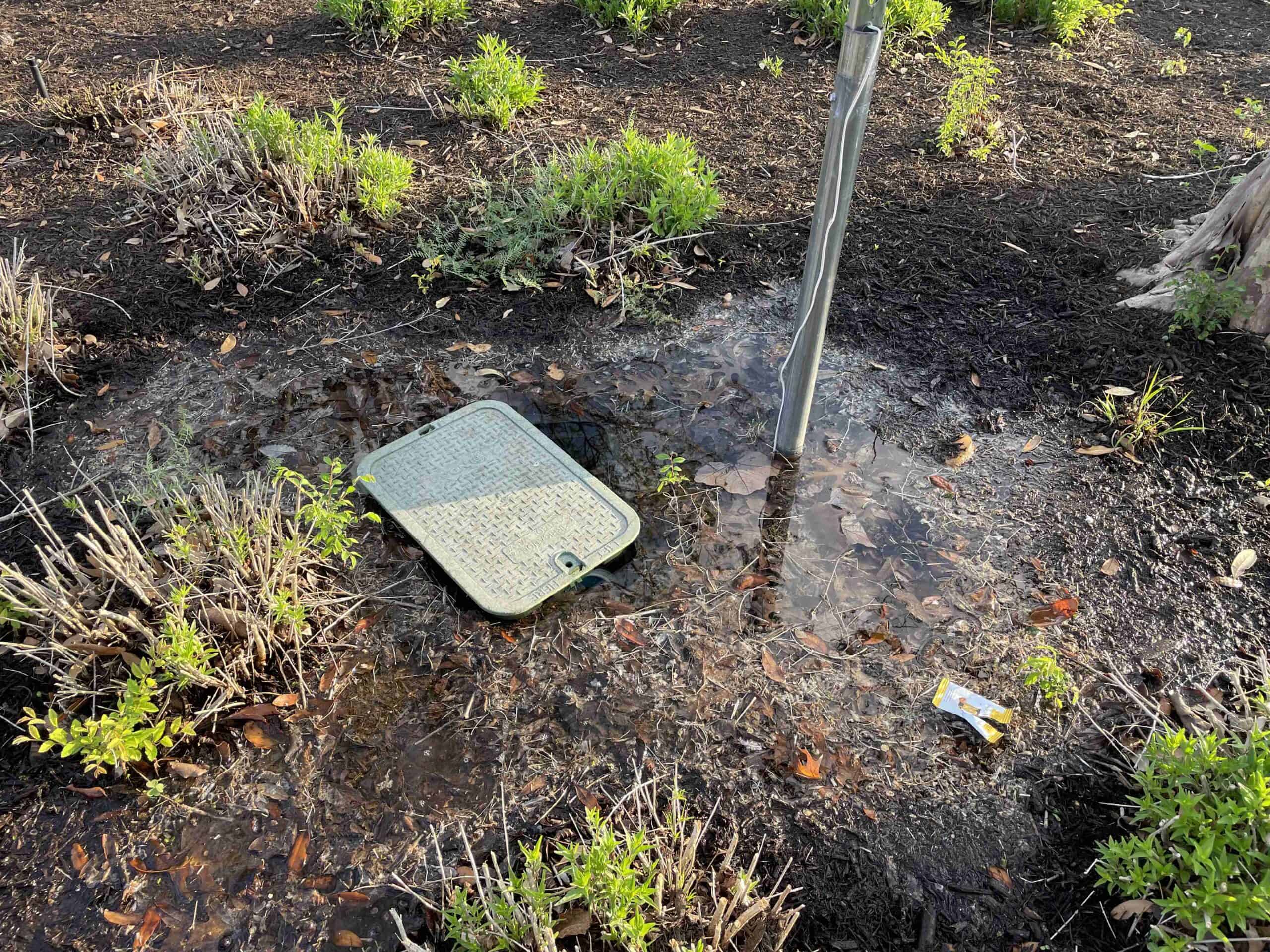Install or Replace an Irrigation Valve | A Homeowner’s Guide
Irrigation systems are important for homeowners, especially in Dallas, TX. It can impact their garden, affect their soil’s health, and influence water conservation. So what can you do if your irrigation is missing an irrigation valve? How can you tell? In this article, we will walk you through how to find and fix the valve so you don’t keep wasting water and money.
Common Signs You’re Missing an Irrigation Valve
Low Water Pressure
One common sign that your sprinkler heads have a malfunctioning or missing valve is the water pressure. For example, if your sprinkler heads are barely spraying water or covering your irrigation zone, this could indicate inadequate pressure. A partially closed or malfunctioning valve can also cause it. A sign of uneven coverage could be dry patches in your lawn or garden.
Since the zones aren’t reaching those areas, it causes your plants and lawn to suffer. It could also be the opposite, where some areas get excessively wet, and water pooling could occur. This isn’t good for your plants either. Another sign is if you notice a spike in your water bill due to the poor usage of your water. By tackling these problems as soon as possible, you can resolve the issue without it turning into a bigger, more expensive problem you’ll need to fix down the line.
Turned Off or Inconsistent Irrigation Zones
Other signs could indicate a problem with your irrigation valve aside from low water pressure. One of them is skipped zones. This means some irrigation zones fail to turn on while others work like clockwork. This could mean you have a malfunctioning or missing valve on your hands. This can be caused by electrical issues, debris blocking the valve, or a broken solenoid. The accompanying symptoms resemble low water pressure, like overwatering dry patches or pooling water.
However, if you listen for clicking, humming, or squeaky sounds when the system is active, those could be the problematic valves revealing themselves. Another issue is if your sprinkler heads are failing to pop up. Due to weak spray patterns, this is a sign of low water pressure caused by valve blockages or supply issues. By effectively diagnosing these problems, you’ll be able to take the next step: fixing your missing valve issue.

How Do You Locate a Buried or Missing Irrigation Valve
How To Locate the Valve
Now that you’ve successfully identified what the issue could be, it’ll be time to fix the problem. Once you’ve fixed the problem, your irrigation system will work effectively again and stop wasting water and money. The first step is to perform a visual inspection. That means looking for exposed valve boxes. They can usually be located near the corners of your house or the backflow preventer. Next, you should use your irrigation controller to activate the irrigation zone causing you issues. Listen to which sprinkler head pressurizes first and listen for unusual sounds. Then, you can probe the soil with a long, thin rod to try and find the malfunctioning valve.
Once you’ve located the valve by following the wires from the controller, you can dig small holes every 10 ft along the wire path until you get to the valve box. Try to use a valve locator device to help locate the buried valves. Lastly, you can use a hand trowel to avoid damaging the pipes or wires. Try to dig 6-12 inches deep until you find the valve box. Consider this almost like a treasure hunt. Once you’ve found it, you can either install a new valve/s or replace them. We recommend that you consult a professional if you’re unsure what to do.
Helpful Tools You Can Use
To find a missing irrigation valve, it is ideal to equip yourself with a few tools to make the job easier and better. You can use wire and valve locators to help you locate the valve with its precise detection technology. Another low-cost tool that can help you locate a solenoid is a Buzzing Solenoid locator. It will create a loud buzz you can hear and help you locate the solenoid. A click-it valve locator will help interrupt the flow of electricity to the valve solenoid and make a loud chattering sound.
This sound will help you locate the underground valves. Wire tracers follow the path of wires from the controller to the valve, allowing you to map out the system and find the hidden valves. Last but not least are mobile grounding rods. They can be used with wire locators to ensure you have proper contact with the ground while tracing the wires and valves. These tools can be very helpful, but purchasing all of them can rack up the costs. If you also don’t want to bother learning how to use each of them, you can hire a landscaping professional with these industry-grade tools to perform a quick and thorough missing valve inspection.

How to Replace Your Broken or Missing Irrigation Valve
How to Remove Your Irrigation Valve
After locating your irrigation valve, the next step is removing it if it is missing or malfunctioning. First, you should shut off your irrigation water supply so you don’t have water spraying out at you during the removal. You can usually find it by the main water shut-off valve. Next, you’ll have to determine what you should do. If your valve is missing, you must install a new one. If it’s malfunctioning, you should see if any worn-out parts need replacing or if it is due to an electrical fault.
Gather tools like a pipe cutter, screwdriver, Teflon tap, PVC glue, a multimeter, and waterproof wire connectors. Dig around the valve box to expose the valve. Then, disconnect the wiring and unscrew the wire nuts. Try to cut the pipes connected to the old pipe using a PVC cutter. A fairly lengthy process, but you’ll be in a good position to start the next part of the process, which is replacing your irrigation valve with a new one. This can also apply to installing a new one without this whole removal process.
How to Replace it With a New One
Once you’ve installed the new valve and attached it to the existing pipes, you can use PVC glue to help fit it together. Connect the wires from the solenoid to the new valve to the system wires and use waterproof wire connectors to protect against moisture damage. Once you’ve shut off the water supply, disconnected the wire, and removed the old valve, you can prepare the new valve. First, wrap the plumber’s tape around the male threaded ends of the PVC adapters. This will help create a watertight seal. Next, attach the PVC adapters to the new valve using pliers.
When tightening it, try not to grip too hard, or you’ll crack it. Then, you can install the new valve using a PVC primer and solvent glue to glue the adapter sockets inside and outside.
Once you’ve done that, you can push the pies into place and ensure they are fully seated in the adapter sockets. Then, you can let the glue dry for a couple of hours before reconnecting the wires from your irrigation system to the solenoid on the new valve. Then, you can test your work and see if things are properly working. This can be a technical process, and we recommend working with a professional if you don’t know what to do or don’t have enough time to work on fixing the issue yourself. Hopefully, we’ve provided you with lots of insight into our work and can help you understand your irrigation system better!

Conclusion
Now that you know the importance of fixing or replacing your irrigation valve, ensuring your irrigation zones are in working order, and using helpful tools, you may be unsure what you need to do. We understand that irrigation repair, especially when it comes to your irrigation system, can be tricky.
That’s where we at Progreen Landscape Solutions can help you. With our comprehensive irrigation services, we’ll be able to provide you with high-quality irrigation products, expert annual inspections, easy and quick irrigation repairs, and more! Interested in working with us to get your irrigation system working at its best? You can contact us today, and we’ll be able to book an appointment with you soon.

"*" indicates required fields

RACHEL, H

C.W.

GEORGE, T.

MARK, A.
SERVICE AREAS
Dallas
Fort Worth
Frisco
Irving
Arlington
Plano
Allen
University Park
Grand Prairie
Richardson
Preston Hollow
Highland Park
Lakewood
Farmers Branch
Balch Springs
Duncanville
Coppell
Grapevine
Vickery Meadow

